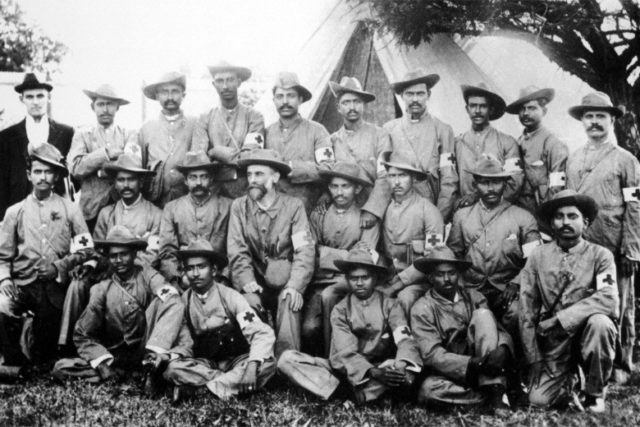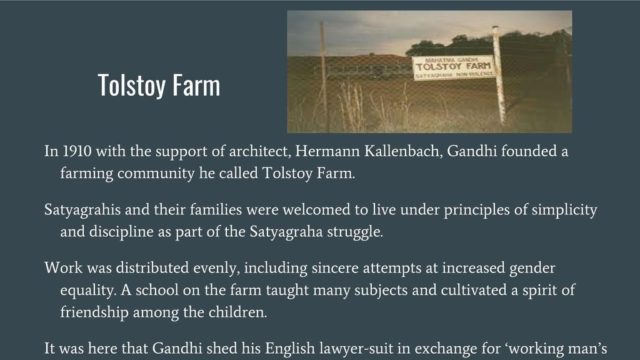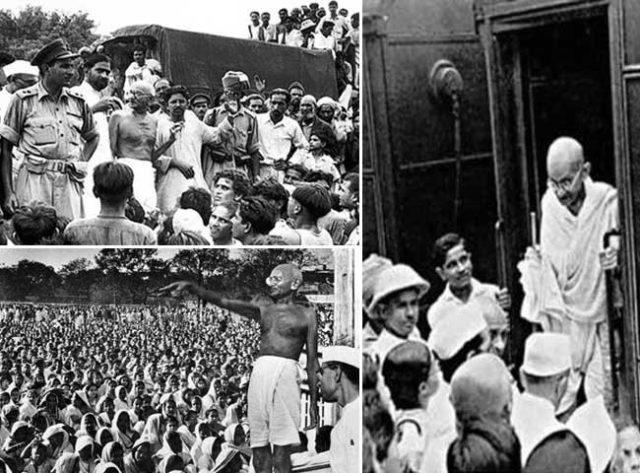PREVIOUS
Mohandas Karamchand Gandhi
May 9 , 2019
2027 days
15234
0
Early Life and Family
- Mohan Das Karamchand Gandhi was born on 2nd October, 1869 at Porbandar in Gujarat to Karamchand Uttamchand Gandhi and Putlibai.
- His father served as the diwan of Porbandar state.
- In May 1883, the 13-year-old Mohandas was married to 14-year-old Kasturibhai Makhanji Kapadia.

- After finishing his early education in India, he sailed to England and qualified as Barrister in 1891.
- His eldest son, Harilal was born on 23 August 1888, just before he left for England for higher studies.
- His Second son, Manilal was born on 28 October 1892.
- His Third son, Ramdas was born on 2 January 1897.
- His Fourth son, Devdas was born on 22 May 1900.
- Devdas married C.Rajagopalachari's daughter Lakshmi.
- Gopala Krishna Gandhi, who was the 23rd Governor of West Bengal serving from 2004 to 2009, was born to them (Grandson to Gandhi as well as Rajaji).
Early Struggles in South Africa
- In 1893, Gandhi went to South Africa for the merchant Dada Abdullah case as a lawyer.
- On June 7,1893 Gandhi was evicted from a train in South Africa’s Pietermaritzburg station because the compartment he travelled in was reserved for “whites only”.
- Gandhi founded “Natal Indian Congress” to fight discrimination against Indians in South Africa in 1894.
- He stablished a newspaper in south Africa known as “Indian Opinion” on 6 June 1903.
- Gandhi created the “Natal Indian Ambulance Corps” which was used by the British as stretcher bearers during the Second Boer War.

- In September 1906, Gandhi organised the first Satyagraha campaign to protest against the Transvaal Asiatic ordinance that was constituted against the local Indians.
- Again, in June 1907, he held Satyagraha against the Black Act.
- He also fought against the nullification of non-Christian marriages in 1913.
- In 1914, Gandhi was awarded the Kaisar-i-Hind Gold Medal by the government for raising the Indian ambulance unit during the second Boer war.
- But this title was given up by Gandhi during the Non-Cooperation Movement held after Jalianwala Bagh massacare in 1919.
- During his stay at South Africa Rettaimali Seenivasan acted as a translator in the judicial court.
- Gandhi learnt Tamil from him to understand the greatness of Tirukkural. Gandhi also learnt to sign in Tamil from him as “Mo. Ka. Gandhi”.
- Thillaiyadi Valliammai was a South African Tamil woman who taught Tamil to Gandhi.
- The political career of Gandhi started in South Africa where he launched a Civil Disobedience Movement against the maltreatment meted out to Asian settlers.
- In 1910, Gandhi established a 'Tolstoy Farm' near Johannesburg with the help of his friend Hermann Kallenbach to serve as a Base of Operations for his Activities in South Africa.
- Gandhi was greatly influenced by Leo Tolstoy, through his book ‘The Kingdom of God is Within You’ which made him speak of his “inner voice” and live a life of “simplicity”.

- On 6th of November 1913 Gandhi Begins "Great March" to gain Indian Rights in South Africa.
Returned to India
- At the request of Gopal Krishna Gokhale, conveyed to him by C. F. Andrews, Gandhi returned to India on 1915 January 9 which is celebrated every year as a Pravasi Bhartiya Divas.
Titles of Gandhi
- Gandhi gave a tittle to CF Andrews as Deena bandhu ("Friend of the Poor").
- Gopal Krishna Gokhale was a political guru of Gandhi.
- Rabindranath Tagore bestowed the title “mahatma” on Gandhi in 1915 while writing his autobiography.
- Gandhi called Tagore as Gurudev.
Regional Struggles
- On 19 April 1917, Gandhi joined farmer's uprising which is took place in Champaran district of Bihar.
- Tenants from Champaran were forced under the law to plant three out of every twenty parts of their land with indigo plant for their landlords under the so called Tinkathia system.

- Brajkishore Prasad, Rajendra Prasad, Anugrah Narayan Sinha Ramnavmi Prasad, and J. B. Kripalani were other popular leaders participated in this agitation.
- This was the Gandhi’s first experiment of Satyagraha in India.
- Gandhi also included in the inquiry committee.
- Gandhi recommended to abolish Tinkathia system.
- On 17th June 1917 Gandhi established Sabarmati Ashram in the bank of sabarmati river.
- In March 1918, Gandhi led a strike in the Ahmedabad cotton mills.
- This was because of dispute between workers and the mill owners over the question of a plague bonus.
- This was the Gandhi’s first Hunger strike protest.
- One of the leading mill owners, Ambalal Sarabhai's sister, Anasuya Behn, was one of the main lieutenants of Gandhiji in his struggle.
- The strike was withdrawn when tribunal later awarded 35% increase the workers had demanded.
- In April 1918 Gandhi took the case of the Kheda district farmers and led the protests against British.
- Sardar Vallabhbhai Patel, Indulal Yagnik, Shankarlal Banker, Mahadev Desai, Narhari Parikh, Mohanlal Pandya and Ravi Shankar are the others who participate in the protest.
- This was the Gandhi’s first non-cooperation moment.
---------------
Leave a Reply
Your Comment is awaiting moderation.


